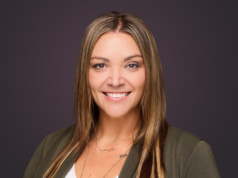Suzanne: And welcome back everyone to Answer for Elders Radio Network with Era Living. And I am having the wonderful privilege of talking to Sarah Chimbanga, who is the regional Director of Health and Wellness. Era Living has eight communities around King County of Greater Seattle. And we’re excited to have you guys being involved. And one of the things I think that families are always thinking about is there’s all kinds of places all over the place that you could potentially have your loved one be cared for. And I always say, Sarah, that the number one question in the back of everybody’s mind if they’re talking to a provider for a vulnerable loved one is, can I trust you? It’s that level of trust that knows that, when I walk out that door and go home to my life, is my loved one going to be well taken care of? And one of the ways in which I know, there’s an organization, the Washington State DSHS, Department of Social and Health Services, they provide what’s called surveys, state surveys to communities. We in the industry know all about them, but it isn’t necessarily something that the general public gets a chance to look at. And so, Sarah, I’m really glad you’re back, because I wanna talk about this topic. DSHS surveys, tell me a little bit about what goes on with those. I’m sure if they’re very involved, are they not?
Sarah Chimbanga: Only a little bit. (laughs)
Suzanne: Only a little bit. (laughs)
Sarah Chimbanga: Washington has about 170 regulations around assisted living. Like you mentioned, they also want to make sure that all the facilities in the state of Washington are actually keeping the resident in the center, and are actually providing the care as outlined, and also are following regulations to make sure that the residents that we’re serving are well cared for. So the DSHS survey is a way for DSHS to come into every single facility that they have given a license to, and go through all of our records, all of our staff, all of our resident care material, and compare that with 170+ regulations to make sure that we’re following each one of those. And doing that survey, they talk to residents, they talk to family, they talk to staff, they want to make sure that what we’re saying we’re doing, we’re actually doing. So I think it’s a really great resource for families, for residents that are looking to make the move to look at those surveys to say, of all the different audits that DSHS has conducted in the communities, what have been some of the findings, what have been some of the areas that community needs to work on.
It’s a really involved process, usually about three days that we have a team from DSHS coming in and reviewing records, talking to staff, talking to residents, talking to families. But it’s a great resource for us as well, because the care team, they get to find out, are we doing right by our residents? Are we following the regulations? So it’s pretty rare, considering the sheer number of regulations for us to have no findings. So that’s been one of the privileges of working for Era Living, is that we take a lot of pride in our communities, in our residents, and especially in the care that we provide, because any time the survey happens, we’re not needing to scramble, especially from day to day, making sure that we’re doing the right thing.
Suzanne: I think it’s also just making sure when you’re engaging in this process, it’s like what Stephen Coffey Covey talks about, sharpen the saw, it’s always making sure that your standards are as high as they possibly can be. And I think that’s something that either people can welcome the surveys and talk about them or they can work against the situation. And that is kind of an indicator to me, and it’s interesting because those of us in the industry, we know the communities that have high state surveys. I think it starts from just basically that attention to detail. It’s that attention to making sure that every single situation is well thought through, and that you’re mindful of everything. And I think that’s something that you guys do so well.
Now, obviously, when resident needs to move, let’s say, for example, they’ve been in independent living and they need to go into assisted living. What is that called? And how does they make that transition?
Sarah Chimbanga: So we actually call it what you just said, the transition. Usually if a resident is already a resident in our community as an independent living resident, a lot of the times we’ve already built rapport with the resident, we’ve created that relationship of trust which starts at the beginning, at the assessment, to say even when a resident moves in independent, we talk about in the future, should you need assistance, the same care team that you see in the community will be ideally the same one that’s helping facilitate that transition. So any time a resident has a change in condition, and they are coming to us and saying I’m gonna need some assistance with, let’s say dressing, we sit down with the resident, we sit down with their family if they have family involved, or we sit down with your representative if they have a representative, we say what are some of the issues? What have been the changes? We also reach out to their provider to say, what are some of the changes? What are some of the health conditions that we can help manage? Using all of that information, we then put together a plan of care that best meets the needs of the resident at the time of the transition. And again, going back to our model for licensing, which is flexible licensing, most of the time it does not warrant a need for the resident to move out of their apartment. They have moved in independent, they’re now needing assistance, we’re able to bring that assistance to their current apartment.
Suzanne: And that’s so valuable. If somebody’s entering assisted living, do you do the assessment two weeks after they move in as well? Just to make sure, or do you already know that, because they’re an existing resident?
Sarah Chimbanga: We do the two-week assessment. It’s kind of similar to the new move-in process. We may put together a really good plan of what we think work the best. And then once we actually start to provide that assistance, the resident or we may say, hey, we had talked about maybe doing dressing at eight o’clock. The resident may say, well, actually, I want to stay up later by dressing at nine o’clock. So we go back in two weeks later, see how have we been doing, has it been working for us to, let’s say, bring the medications to you, or has it been working for us to provide shower assistance in the afternoon? We don’t need to wait six months to make a change if we can do it in a week to week’s end.
Suzanne: Sure. And that’s a process that you’re dealing with everyone. Now, I’m gonna throw something at you. What if someone is living in one of your communities, and they have dementia, and you don’t have that category of care at that community. Are they able to go transition over to an other community providing there’s space available?
Sarah Chimbanga: One of the beautiful things about having eight communities, two of which have memory care, is we’re able to refer in-house. Once a month, sometimes even more than that, we get together across all eight communities and get to talk about each other and the services that we can and cannot provide. And so that’s a good opportunity for residents whose needs may have exceeded assisted living but needing memory care. So we’re able to say we use the same forms. I think it’s comforting for residents and families to say you’re gonna be within the same organization, the same process, the same level of care that they may have become accustomed to being provided, even as they make this move to memory care.
Suzanne: What happens when someone exceeds assisted living? Is it usually that if they have to be lifted out, they can’t transfer themselves. Is that what an indicator is? I’m trying to remember some of the indicators.
Sarah Chimbanga: Yeah, it varies. We really want to make sure that whenever safe and possible that we’re able to let our residents age in place. Sometimes just depending on the community and depending on the residents needs, we may be able to bring in additional resources that would help facilitate them. We know moving in is a big deal, and it’s a big stressor. So is the other flip side, needing to move out and find a new home, get used to a new care team. So we try to work with residents and families as much as we can while keeping the resident’s safety as primary. If we can bring in additional resources, then we’re willing to stretch and make sure that whatever we can do in-house, we do that before moving somebody out.
Suzanne: You’re so right on the stress factor of moving. It’s overwhelming, and certainly it goes to allowing husbands and wives to stay together. If someone’s needs are that far out, it’s nice to be able to bring things in from inside, you know, outside, so that you can remain together, intact, as a couple. And I think that’s life, that’s the most, the quality of life is definitely in focus of that. So Sarah, this is really interesting. So as far as the family involvement, when you’re assessing and making these assessments, you have the care team that’s usually working with the person that is the health care power of attorney, but usually can be with authority from the resident to work with, a son or daughter or a family friend or something like that. How do you determine who you work with?
Sarah Chimbanga: Yeah. So at the beginning, especially during the move-in assessment, we have forms that the resident fills out, and they can indicate if they do have a durable power of attorney. We want to make sure that as we’re moving them in, we also get copies of that, so that we make sure we’re protecting the residents information, and that we’re only involving the people that the resident has identified as a power of attorney, or as a resource for the care team. So any time a resident is moving in and it has a durable power of attorney or an advanced directive, we want to make sure we go through that. We want to make sure that even on our emergency forms, that every resident has, to say who are the people that you want us to connect with? Who are the people that you want us to include in those care conferences? Who are the people you want us to call when you have an emergency? So it’s really important from the get go, for the resident to identify here are the people that I want included in my care. And sometimes you may have maybe one family member designated as a durable power of attorney for health care, and another one might be designated for finances, and oftentimes because care translates to finances, we then have a conversation to say, can we include everyone when we have care conferences to make sure that we’re communicating appropriately.
Suzanne: Fabulous. Well, Sarah, it has been such an honor to have you with us this afternoon and discussing these important things. For each and every one of you who have been listening, I invite you to visit Era Living dot com. And we certainly would love to hear your feedback, and have you go take a tour of their communities, and listen to their podcasts, go to your favorite podcast channel and type in Answers for Elders and Era Living, it’ll be right there. Thank you again, Sarah for being with us today.
Sarah Chimbanga: Thank you for having me.














